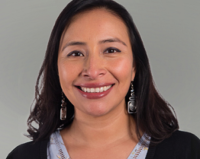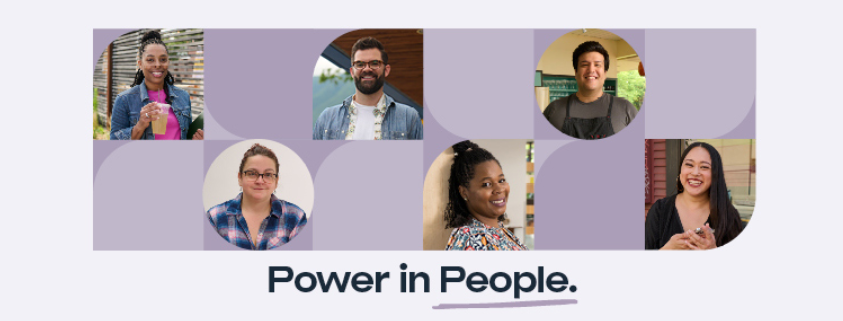Top-Level Takeaways
- BECU’s DEI strategy focuses on three pillars: community, members, and employees and culture.
- Several councils help move the organization’s work forward.
- 900 employees participated in the cooperative’s 2nd Annual Equity Summit this year.

When Jackie Martinez-Vasquez joined BECU ($29.2B, Tukwila, WA) just over two years ago, the cooperative’s DEI efforts focused primarily on employees and some reporting to the board of directors. But the pandemic and the death of George Floyd in 2020 sparked a renewed movement for social justice.
“When I joined in September of 2020, BECU realized it needed to lean into this space and create a comprehensive strategy,” says Martinez-Vasquez, who serves as the vice president of diversity, equity, and inclusion at the big Washington cooperative.
The Strategy
In her role, Martinez-Vasquez developed an expansive strategy that included employees and culture, but she wanted to move quickly beyond representation to operationalize BECU’s DEI efforts and drive real change to benefit the big cooperative’s membership and community.
Consequently, BECU’s Office of Equity & Inclusion has recently grown from two to five team members, and its focus on moving the organization forward assumes diversity is already a strong component within the organization.
BECU’s DEI strategy focuses on three pillars: community, members, and employees and culture. Each of these broad areas contain sub-strategies. For example, the employees and culture pillar includes a capacity-building strategy with a multi-faceted approach to DEI training, 10 active employee resource groups, and internal DEI goals that every employee must meet annually. The community pillar includes specific investment goals with a racial equity lens, a dedicated DEI consultant for the tech division, and strategies around building multi-lingual capability to help BECU meet more of its members’ and community needs.
A Pathway To Equity
Martinez-Vasquez has been working in the field of DEI for more 20 years and has developed her own approach informed by her lived experiences. Her quest to understand the why behind discrimination and racism has led her to focus on how to change systemic issues to create greater equity for all. Before charting BECU’s course, the vice president met with teams across the credit union.
She presented her equity pathway framework and asked people where they thought BECU was in this journey.
“Consistently, the people I spoke with placed us between ‘diversity’ and ‘inclusion,’ so I was able to get a good temperature read and create a strategy to meet the institution where it was,” the VP says.
By listening and adjusting the framework she has used across multiple industries, Martinez-Vasquez has expanded BECU’s DEI efforts far beyond internal culture and operations.

Change From Any Seat In The House
As a former community organizer, Martinez-Vasquez learned how to drive change from many different places. The key in any industry is knowing how to bring people along on the journey, she says.
“You have to start with early adopters,” Martinez-Vasquez says. “I’ve studied teams and change management extensively. Typically, about 60% of the people are ready to get fully onboard, 20% are neutral, and 20% you’re never going to be able to reach.”
CU QUICK FACTS
BECU
DATA AS OF 09.30.22
HQ:Tukwila, WA
ASSETS: $29.2B
MEMBERS: 1.4M
BRANCHES: 60
EMPLOYEES 2,675
NET WORTH 10.2%
ROA: 0.05%
According to Martinez-Vasquez, the challenge at many organizations is that the naysaying 20% often have the loudest voices. Not allowing that 20% to derail plans can be difficult; however, organizations that focus on the 60% who are ready to adopt change have a greater chance of success.
After supplying those team members with the tools they need to support the new strategy, Martinez-Vasquez advises organizations to focus next on the neutral 20% to determine how to bring them along.
“At that point, you’ll have 80% of your team pushing things forward,” she says.
Deputizing The Entire Organization
Although the Office of Equity & Inclusion does plenty of work on its own, team members throughout the organization also take action and lead in their own right.
BECU has created three working councils for its three pillars. An umbrella Equity Council composed of executives serves as a sounding board for overall strategy, and an Equity Communications Working Council unites individuals from marketing, advocacy, and communications around DEI.
“There are lots of opportunities to focus on racial equity with members, to serve BIPOC communities, and to become more inclusive and equitable as an organization,” says Martinez-Vasquez. “Each of these working councils has its own plans and strategic focuses to help us fulfill our equity commitments.”
To help push its DEI efforts forward, BECU has crafted several Equity Agreements. Click here to download and read them.
Best Practices And Advice
Approximately a year ago, BECU conducted a racial equity cohort workshop that is a driving force behind BECU’s work.
“We chose the participants carefully and provided them with an analysis of how they can be empowered and liberated gatekeepers,” Martinez-Vasquez says. “This helped people understand the power that comes with having a position of privilege and how even small changes can advance our DEI work.”
That workshop prompted the most inclusive marketing campaign in BECU’s history. “Power in People brand campaign shares real member stories and showcases the power that comes from financial empowerment.

BECU recently hosted its second annual Equity Summit, a full day of learning that included outside guest speakers and Ted talk style “Equity Reflections” from several members of the BECU team sharing how they’ve operationalized DEI.
“This year we kind of broke the internet,” Martinez-Vasquez says. “We had over 900 employees streaming the hybrid summit at one point and over 760 participate consistently throughout the day.”
BECU attracted Martinez-Vasquez through its potential impact on the community; that’s what keeps her excited about BECU’s DEI journey today. To fulfill that potential across the industry, she urges every credit union to develop a holistic strategy that looks beyond employees.
“I could easily have a full-time job just focused on our internal team,” Martinez-Vasquez says. “And while that can be valuable, it doesn’t address the whole system and operationalize equity and inclusion for our members and communities.”
How To Lead With Purpose
Why does your credit union exist? Do you serve your members and community in ways that set you apart from other financial choices? Rethink your role and responsibility to members, employees, communities, and the environment with Sustainable Business Strategy, a learning experience Callahan & Associates offers in collaboration with Harvard Business School Online.
